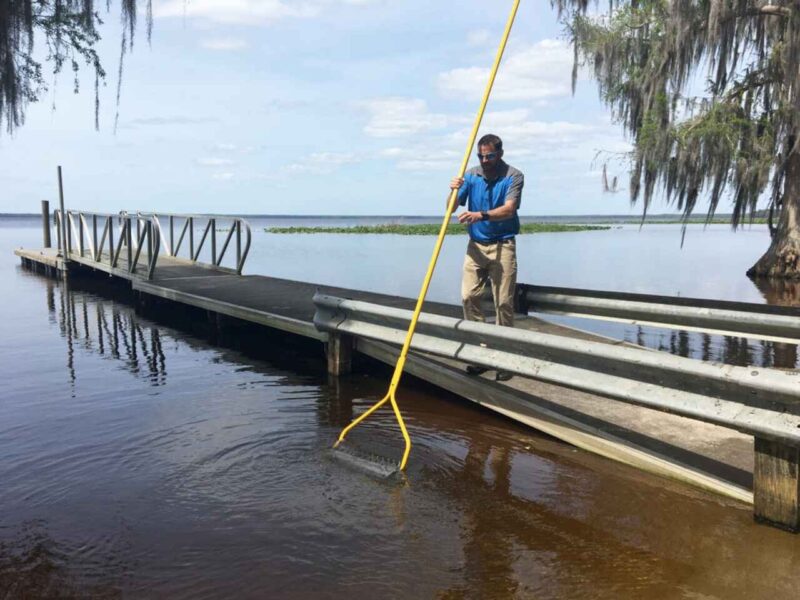Muck is a dark, slimy buildup of organic materials like algae, decomposing plants, sediment, and waste.
It settles around docks and shorelines, creating foul odors, poor water clarity, and making swimming or docking unpleasant.
For anyone owning waterfront property, controlling muck isn’t optional.
Consistent maintenance helps protect your investment and ensures the area remains clean and usable throughout the year.
Assess the Muck Situation
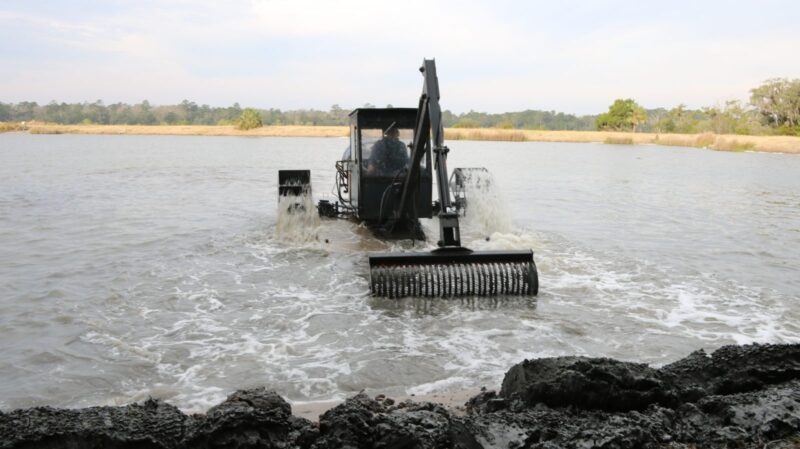
Before starting removal efforts, take time to evaluate the scope and characteristics of the problem. Begin by identifying how much has accumulated.
Use a basic probe or stick to measure how deep the layer extends and how far it spreads beneath the surface.
Feel for the texture; thick, sticky material indicates long-term buildup and minimal water circulation.
A foul smell often accompanies older, more stagnant sections, confirming the presence of decayed organic material and settled waste.
Water movement plays a critical role in mud accumulation.
A shoreline with little current becomes a trap for organic debris, causing it to settle and rot at the bottom. In contrast, areas with regular wave action or water flow may have significantly less buildup, as particles remain suspended and disperse more easily.
Note areas where the water remains still, especially during calm weather conditions, as these will likely have the highest accumulation.
Topography also matters. Sloped banks typically allow for better drainage and movement of debris, while flat or recessed shorelines trap sediment and organic matter more easily.
Low-lying spots near the dock are prime zones for buildup, especially when surrounded by hard surfaces that redirect runoff and floating plant material.
Manual Muck Removal Methods
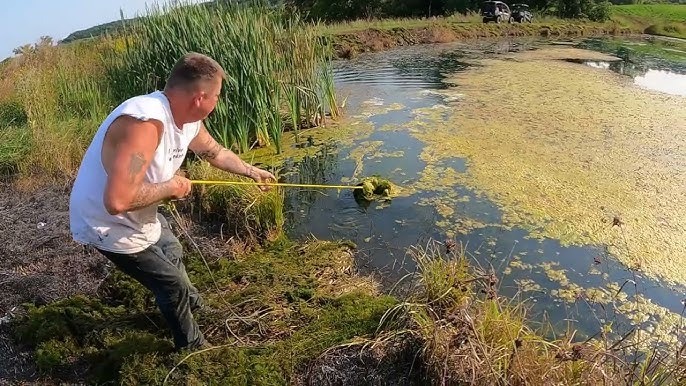
For those preferring a hands-on approach, manual removal methods remain a practical first step.
These tools work best for small areas where heavy equipment would be excessive or unnecessary.
Muck Rakes & Razers
Manual removal tools like rakes and razers are best for shallow water and small dock areas. These tools stir up settled material and allow you to pull it out by hand.
Using a rake helps remove sludge quickly when prepping an area for swimming or installing a stabilization layer.
Pros:
- Affordable
- No special skills needed
- Immediate results
Cons:
- Time-consuming
- Not feasible for large or deep sections
Raking may seem tedious, but when done regularly, it slows the buildup over time.
Weed Razers and Rakes
Removing rooted aquatic weeds is a smart first move. Weeds contribute heavily to muck once they decay. Tools like weed razers let you slice through stems and roots, while a rake pulls the vegetation out before it sinks and adds to organic sludge.
Routine weed removal, especially in early summer, prevents tons of organic matter from breaking down in the water. Less vegetation equals lower accumulation long term.
Biological Muck Reduction
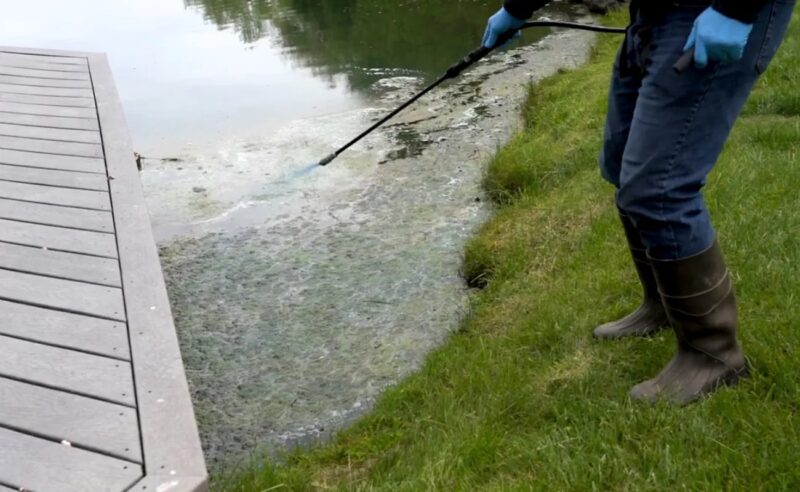
Rather than attacking muck manually, biological methods use natural processes to break it down.
When paired with agitation and aeration, these products become even more effective.
Muck Pellets and Beneficial Bacteria
Biological treatments provide a non-invasive method of reducing muck. Products like MuckAway use beneficial bacteria to consume decaying materials. These bacteria break down organic waste and improve water clarity when applied consistently.
For better effectiveness, pair with sediment agitation using tools like a Muck Razer. Breaking up muck allows the bacteria to reach deeper layers. Expect results after multiple treatments, especially in larger areas. Application frequency depends on water temperature and the extent of the muck.
Aeration Systems
Low oxygen levels slow down decomposition. Aeration systems such as fountains, bubblers, and diffused air setups help oxygenate the bottom layers.
More oxygen means faster breakdown of muck by natural microbes. Continuous movement discourages buildup and supports ongoing biological treatment.
Mechanical and Hydraulic Removal
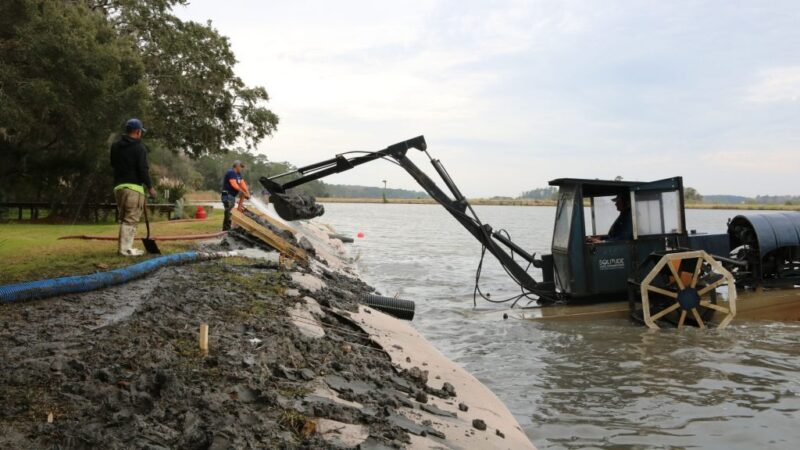
When manual or biological solutions can’t keep up, mechanical and hydraulic methods provide the heavy lifting. These options move or remove muck with force or machinery.
Hydro Jets or Muck Blowers
Hydro jets and muck blowers offer a powerful way to push settled debris away from your dock. These systems move water with enough force to stir and displace muck. Combined with tools that agitate the bottom, such as a bottom roller, they prevent future accumulation.
Aqua thruster fits perfectly in this category. It creates powerful water flow that keeps sediments suspended and moving, which means less buildup around pilings and shallow swim zones.
Dredging or Bulldozing
For serious muck issues, mechanical removal may be the only option. Dredging involves heavy equipment to vacuum or dig out sludge. Bulldozers or long-reach excavators may be needed in extreme cases.
Though effective, this option is expensive and may require permits due to environmental concerns. Use it when shoreline usability is severely compromised or biological/manual methods no longer work.
Shoreline Stabilization for Long-Term Muck Control
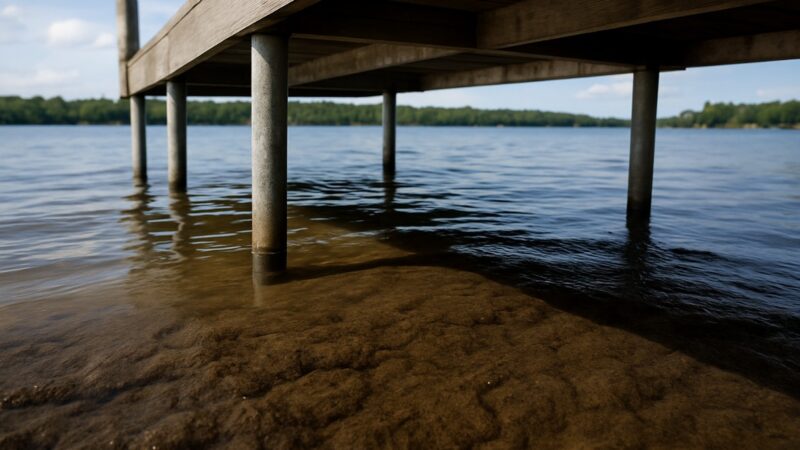
Once the muck is gone, you want it to stay gone. Shoreline stabilization helps maintain progress by creating a barrier and controlling conditions that lead to regrowth.
Landscape Fabric + Sand Layer Method (BeachInADay)
One of the most effective long-term solutions involves creating a physical cover over existing muck.
A breathable fabric barrier combined with a clean sand layer transforms murky zones into inviting swim areas.
To implement this method, follow these basic steps:
- Lay down a breathable landscape fabric directly over the mucky bottom.
- Add at least 6 inches of clean, washed beach sand on top.
- Anchor the entire setup using edging, stakes, or underwater posts to prevent shifting.
- Compact the sand gently for a stable, level surface.
BeachInADay offers ready-made kits that simplify this process.
Once installed, this method blocks muck from resurfacing and creates a more enjoyable area for foot traffic, swimming, and watercraft access.
Dock Design Considerations
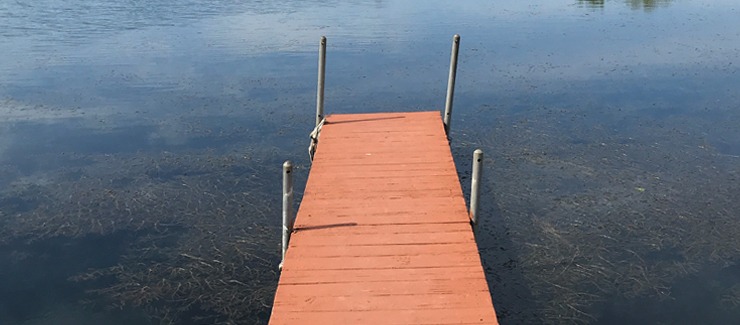
The type of dock in use affects how much muck accumulates beneath and around it. Floating docks are better suited for mucky areas, while fixed docks often require more frequent maintenance.
To make the most of your dock setup, keep the following points in mind:
- Use floating docks like those by PolyDock that adapt to changing water levels and avoid pressing into muck.
- Maintain open space beneath the dock to allow for natural water circulation.
- Avoid structures that trap debris or block water flow, which leads to localized buildup.
- Position devices like Aqua Thruster under or near the dock to keep the lakebed active and clear.
A well-thought-out dock layout paired with shoreline barriers ensures problems stay under control over time.
Clean surroundings and lower maintenance make the effort worth it.
When to Hire Professionals
Heavy muck accumulation, dense weed beds, or regulatory permitting may require professional help.
Experts bring equipment and knowledge that can’t be matched with DIY methods.
Services may include sonar mapping, large-scale dredging, or custom-designed aeration installations.
If your shoreline needs a large blower setup, or if you want to install something like aqua thruster with precise anchoring and electrical wiring, pros will save you time and ensure it’s done right.
Hiring becomes essential when compliance with environmental laws is part of the project.
The Bottom Line
No single approach solves muck buildup around a dock. Best results come from combining strategies:
- Manual removal
- Biological digestion
- Mechanical water movement
- Long-term stabilization
Installing an aqua thruster, for example, keeps water moving and deters new sludge.
Once muck is removed, take steps to stop it from coming back. Weed removal, shoreline fabric barriers, and dock upgrades create cleaner, safer, and more pleasant waterfront access for years to come.

